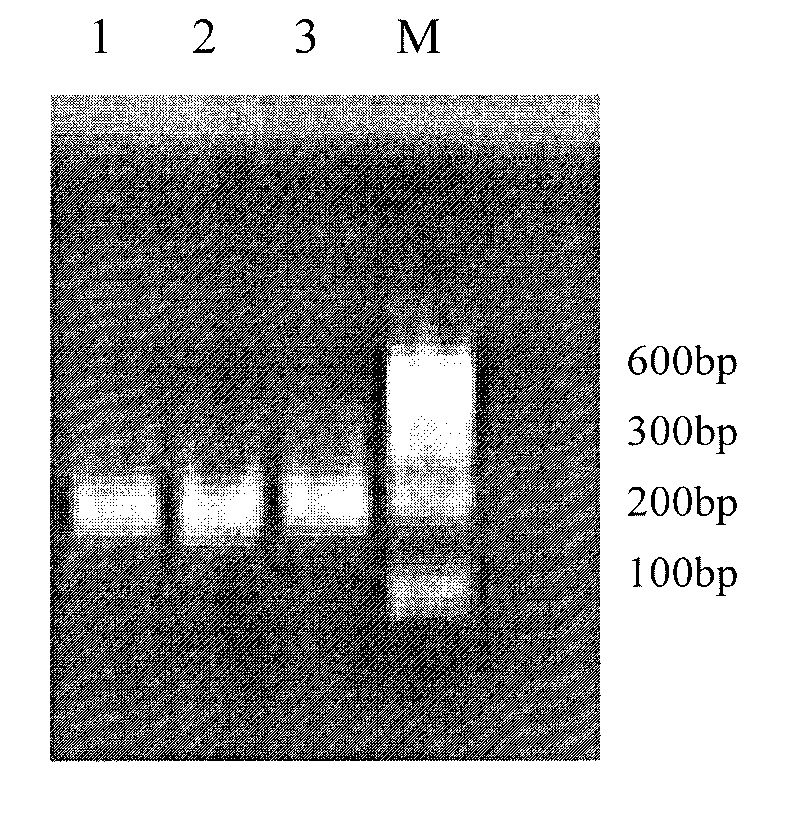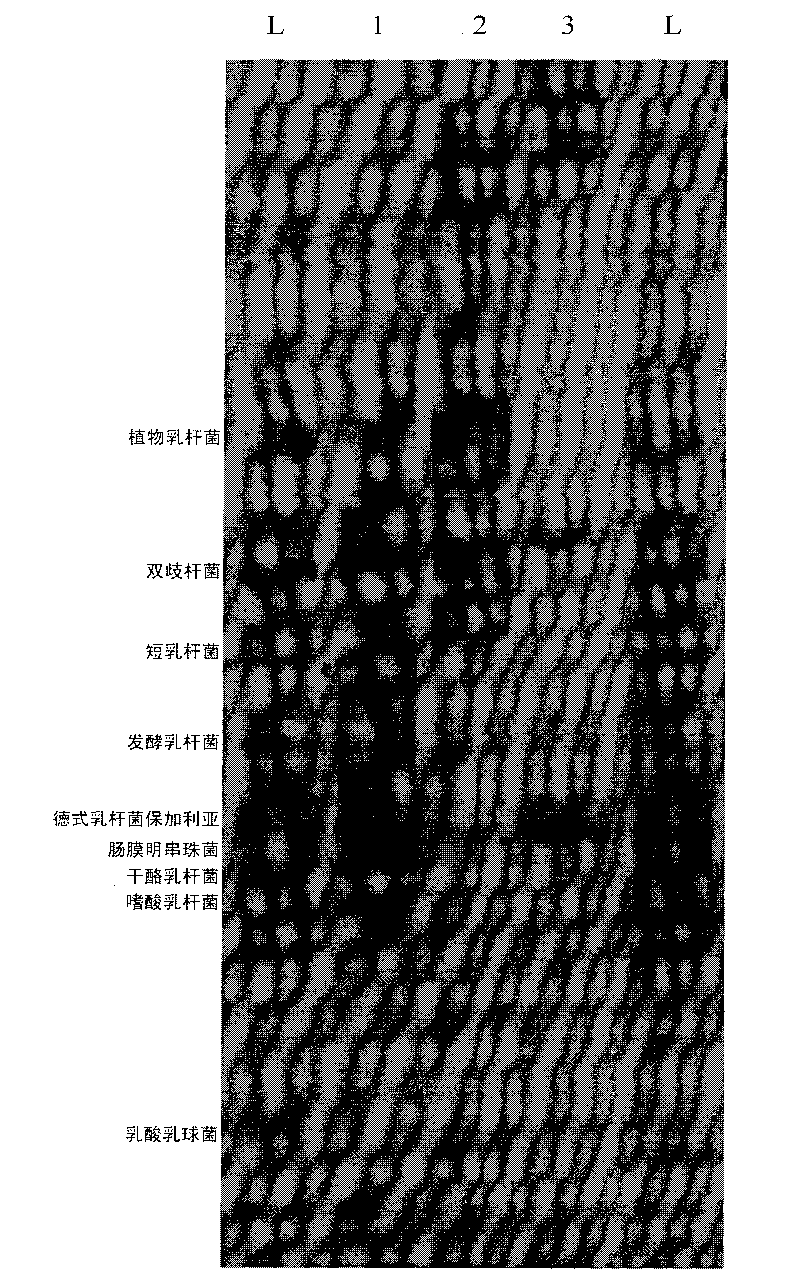Method for rapidly detecting kinds of lactobacillus in fermented dairy product
A technology for fermenting dairy products and lactic acid bacteria, applied in biochemical equipment and methods, and microbial measurement/inspection, etc., can solve the problems of lack of stability and reliability of test results, limited detection efficiency, time-consuming and labor-intensive, etc., and achieve perfection Effects of quality supervision, improvement of testing capacity, and simplification of procedures
- Summary
- Abstract
- Description
- Claims
- Application Information
AI Technical Summary
Problems solved by technology
Method used
Image
Examples
Embodiment 1
[0037] The rapid detection of lactic acid bacteria species in embodiment 1 yoghurt
[0038] The rapid detection of lactic acid bacteria species in yoghurt comprises the following steps:
[0039] 1. Extraction of metagenomic DNA:
[0040] Using liquid nitrogen freeze-thaw-CTAB method: Take 1.0mL of the three samples of yoghurt and place them in 5.0mL centrifuge tubes, immediately place them in liquid nitrogen to freeze completely, take them out and put them in a 65°C water bath to thaw, repeat freeze-thaw 3 times , add 3.0mL DNA extraction solution (100mol / L Tris-HCl; 100mmol / L EDTA; 100mmol / L Na 3 PO 4, 1.5mol / L NaCl, 1% CTAB, pH8.0) mix well, add 0.3mL 10% SDS and 10.0μL 10mg / mL proteinase K, shake at 200r / min in a constant temperature shaker at 37℃ for 2h, centrifuge at 10303g at room temperature After 10 min, the supernatant was collected and transferred to another centrifuge tube. The supernatant and an equal volume of chloroform were centrifuged at 10303 g for 10 min,...
Embodiment 2
[0052] The rapid detection of lactic acid bacteria species in embodiment 2 lactic acid bacteria fermented beverage
[0053] The rapid detection steps of lactic acid bacteria in lactic acid bacteria fermented beverages are as follows:
[0054] 1. Extraction of metagenomic DNA:
[0055] Liquid nitrogen freeze-thaw-CTAB method: Take 1.0 g of the four samples of lactic acid bacteria fermented beverages and place them in 5.0 mL centrifuge tubes, immediately place them in liquid nitrogen to completely freeze, take them out and put them in a 65°C water bath to thaw, and freeze and thaw repeatedly for 3 Once, add 3.0mL DNA extraction solution (100mol / L Tris-HCl; 100mmol / L EDTA; 100mmol / L Na 3 PO 4 , 1.5mol / L NaCl, 1% CTAB, pH8.0) mix well, add 0.3mL 10% SDS and 10.0μL 10mg / mL proteinase K, shake at 200r / min in a constant temperature shaker at 37℃ for 2h, centrifuge at 10303g at room temperature After 10 min, the supernatant was collected and transferred to another centrifuge tube. ...
PUM
 Login to View More
Login to View More Abstract
Description
Claims
Application Information
 Login to View More
Login to View More - R&D
- Intellectual Property
- Life Sciences
- Materials
- Tech Scout
- Unparalleled Data Quality
- Higher Quality Content
- 60% Fewer Hallucinations
Browse by: Latest US Patents, China's latest patents, Technical Efficacy Thesaurus, Application Domain, Technology Topic, Popular Technical Reports.
© 2025 PatSnap. All rights reserved.Legal|Privacy policy|Modern Slavery Act Transparency Statement|Sitemap|About US| Contact US: help@patsnap.com



